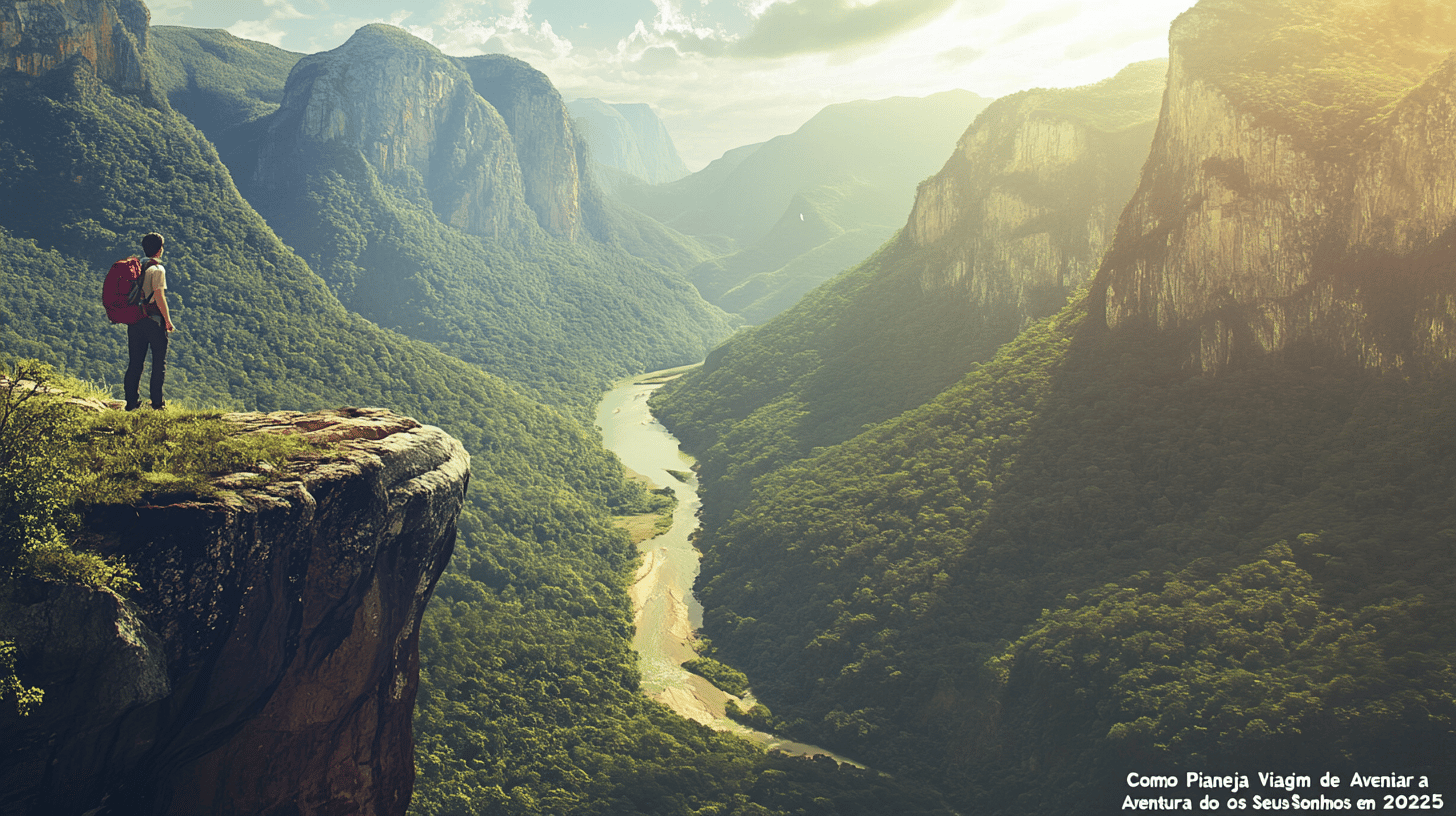Viajar é mais do que simplesmente visitar novos lugares; é uma oportunidade de se aventurar, explorar e, muitas vezes, sair da zona de conforto. Com 2025 logo à frente, é hora de começar a planejar aquela viagem de aventura que você sempre sonhou. Neste guia, vamos detalhar tudo o que você precisa saber para organizar a viagem perfeita, desde a escolha do destino até dicas de segurança, orçamentos e o que levar na mala.
Escolhendo o Destino Ideal
O primeiro passo para uma viagem de aventura incrível é escolher o destino que se alinha aos seus interesses e expectativas. Você prefere montanhas e escaladas, ou está mais inclinado a descobrir trilhas e praias paradisíacas? Algumas das opções mais empolgantes incluem:
– Patagônia, Chile e Argentina: um destino clássico para quem ama trekking e contato direto com a natureza. – Nova Zelândia: conhecida por suas paisagens impressionantes e atividades radicais como bungee jump e skydiving. – Islândia: ideal para aqueles que se maravilham com vulcões, gêiseres e auroras boreais. – África do Sul: perfeita para safáris e belas praias.
Pesquisa e Tempo de Viagem
Uma vez definido o destino, a pesquisa é crucial. Verifique as melhores épocas para visitar, levando em conta o clima, a alta e baixa temporada, e eventos locais que podem ser interessantes. Por exemplo, se você está planejando uma viagem para a Patagônia, o melhor período é entre outubro e abril, quando o clima é mais ameno.
Crie um Itinerário Personalizado Um itinerário bem elaborado pode fazer toda a diferença em sua experiência de viagem. Considere:
Principal Atrações
: Liste as atividades e pontos turísticos que você não pode perder. Isso pode incluir trilhas, parques nacionais, praias ou monumentos históricos. 2. Atividades Aventureiras: Se você gosta de emoções, inclua atividades radicais, como rafting, escalada ou mergulho. 3. Cultura Local: Reserve um tempo para interagir com a cultura local, seja através da gastronomia, danças ou festivais. 4. Descanso e Lazer: Não esqueça de incluir momentos para relaxar e recarregar as energias.
Orçamento e Financiamento Uma aventura também exige planejamento financeiro. Crie um orçamento que inclua:
– Passagens Aéreas: Reserve com antecedência para conseguir melhores preços. – Hospedagem: Considere opções como hostels, campings ou aluguéis de temporada. – Atividades: Verifique os custos das atividades que você deseja realizar e as taxas de entrada para parques. – Alimentação: Planeje o quanto pretende gastar em refeições. – Seguros de Viagem: Um seguro de viagem é essencial, especialmente para atividades de aventura, para se proteger contra imprevistos.
Dicas de Segurança A segurança deve ser uma prioridade em qualquer viagem de aventura. Aqui estão algumas dicas valiosas:
– Pesquise os rituais locais de segurança: Cada país possui suas particularidades. Por isso, seja sempre respeitoso e informado. – Tenha um plano de emergência: Mantenha sempre um contato de emergência e um plano caso algo fuja do controle. – Leve equipamentos adequados: Se for participar de atividades ao ar livre, leve os equipamentos adequados e certifique-se de saber usá-los. – Fique atento aos seus pertences: Em locais movimentados, como mercados ou festivais, tenha sempre um olho nos seus itens.
O que Levar na Mala
Preparar sua mala pode ser uma tarefa desafiadora, especialmente para uma viagem de aventura. Aqui estão as recomendações do que não pode faltar:
– Roupas adequadas: Verifique a previsão do tempo e leve roupas que possam ser camadas para diferentes climas, como camisetas, jaquetas impermeáveis e roupas térmicas. – Calçados confortáveis: Um bom par de botas de trekking e calçados confortáveis para uso diário são essenciais. – Equipamentos: Não se esqueça dos equipamentos para atividades específicas (como muletas de caminhada, traje de mergulho, etc.) – Itens pessoais: Inclua kit de primeiros socorros, blocos de notas, câmeras, entre outros itens personalizados.
Tecnologia como Aliada A tecnologia pode ser uma grande aliada em sua viagem. Aqui estão algumas ferramentas que podem facilitar sua aventura:
– Aplicativos de Navegação: Use aplicativos como Google Maps ou Maps.me para explorar novos lugares. – Redes Sociais e Blogs: Acompanhe viajantes e aventureiros nas redes sociais para dicas em tempo real e inspiração. – Gestão Financeira: Aplicativos de finanças pessoais podem te ajudar a manter o controle de seus gastos durante a viagem.
Preparação Mental e Física A aventura começa antes da viagem. Prepare-se fisicamente e mentalmente:
– Treinos: Se o destino envolver trilhas ou escaladas, comece a treinar antes da viagem. Caminhadas de longa distância, exercícios de resistência e atividades aeróbicas ajudam a preparar o corpo. – Mentalmente: Visualizar a experiência e preparar-se para os desafios emocionais é fundamental. Pratique a meditação e respiração para ajudar a lidar com a ansiedade.
Aprendizado e Reflexão
Aproveitar cada momento é essencial. Durante sua viagem, faça anotações sobre suas emoções, experiências e aprendizados. Isso não só ajuda na reflexão após a viagem, mas também é uma ótima maneira de se conectar com o local e sua cultura.
Conclusão
Planejar a viagem de aventura dos seus sonhos é um projeto empolgante que vale a pena todo esforço. Escolha um destino que te inspire, crie um cronograma flexível, mantenha o foco na segurança e não esqueça de se divertir. Compartilhe suas experiências com outros viajantes, e lembre-se: cada nova aventura é uma página na sua história de vida. Pronto para partir? Então comece a planejar e veja como o mundo está esperando por você!



